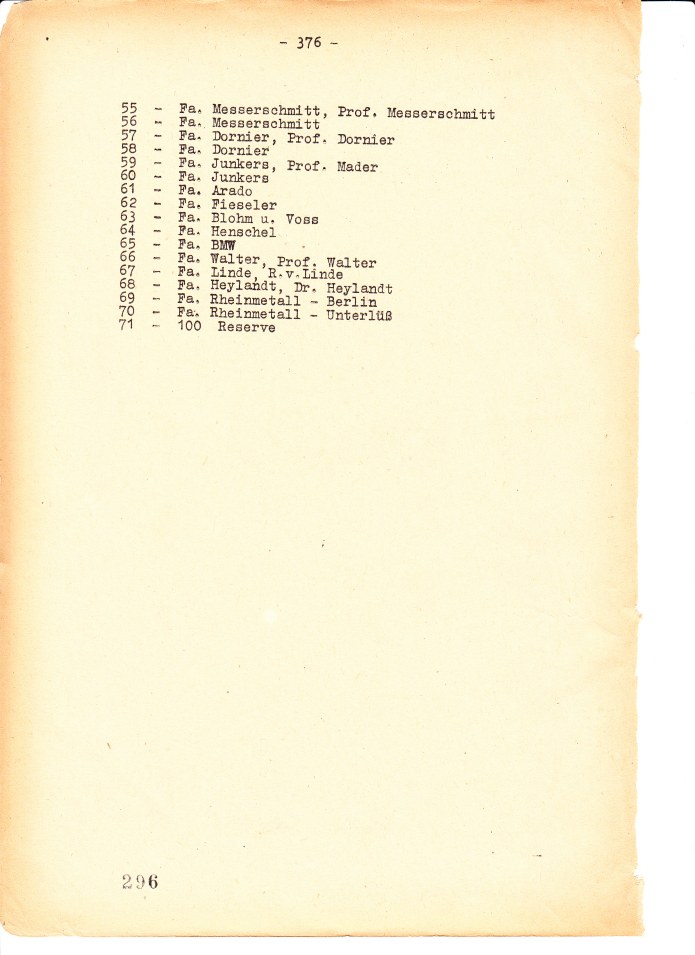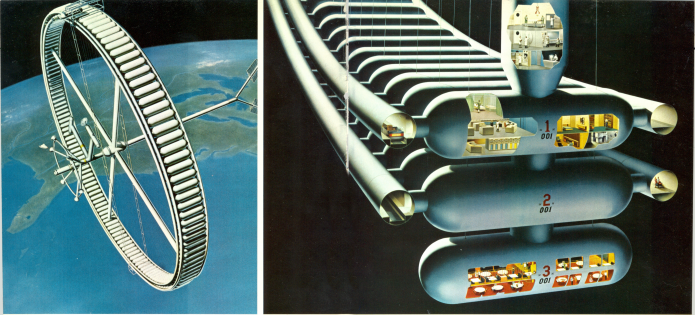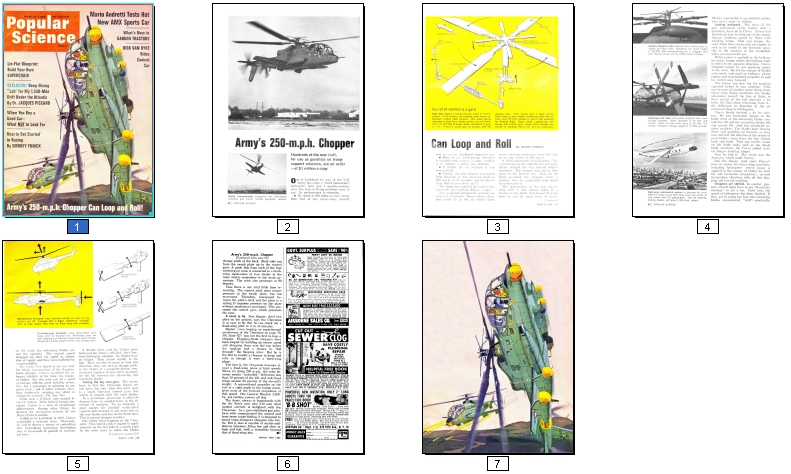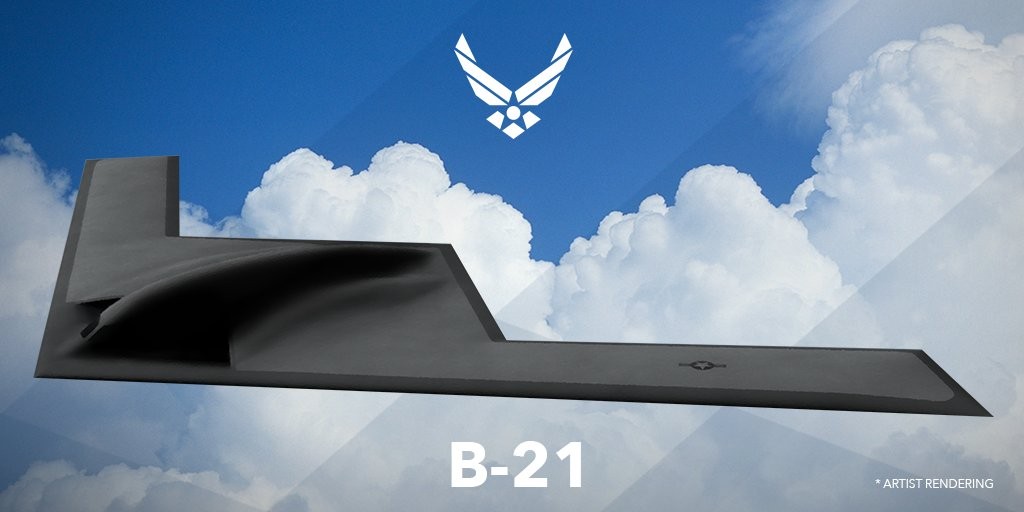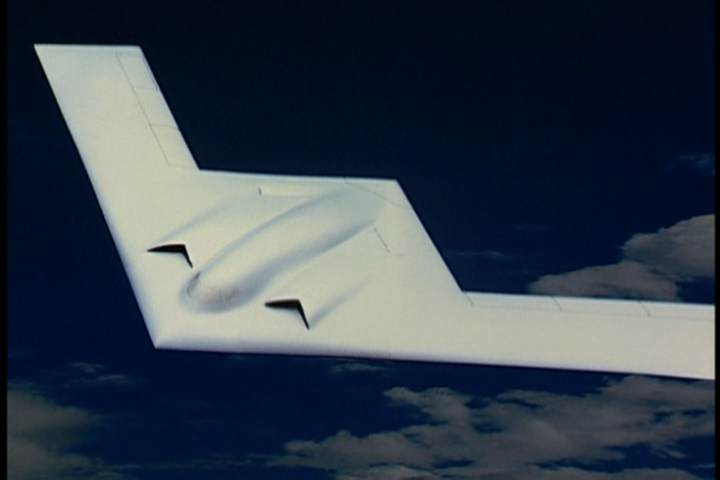Some photos (from ebay) of a NASA PR glossy from December, 1961, showing the then-current Saturn C-5 configuration. Note the fairly obvious signs of some retouching of the engines on the first stage… either the engines were originally larger, or they were larger in number. Note the lack of the small but distinctive stabilizing fins on the first stage.
A mid-1960’s German (VFW/Heinkel) concept for a VTOL passenger transport, a quad-tilt-wing design, with capacity for 40 passengers or 13,200 lbs of cargo.
I’ve uploaded a two-page article from the era on the VC400. It is in the 2016-03 APR Extras Dropbox folder, available to all $4+ APR Patreon patrons. If interested, check out the APR Patreon.
Now up for $10-level patrons to look through and vote on. If interested in getting aerospace goodies (this month there will be *three* documents, one sizable diagram and one original CAD diagram) for as little as a buck and a half, check out the APR Patreon.
The Third Reich was jam-packed full of ridiculous notions. Genocide. Invading Russia. Declaring war on the US. Superstitious claptrap. Dreams of world domination. Government programs that favor one ethnic group over another. Collective economics. But perhaps the *goofiest* idea was one of Hitler’s favorites: the P1000 “Ratte,” a 1000-ton *tank* packing the turret from a battleship, with two 280mm cannon and diesel engines from U-boats. There is zero chance that it would have worked worth a damn,and had one popped up on a battlefield every tactical bomber in a 500 mile radius would have competed to bob it into oblivion.
I’ve often thought that what the world needed was a good scale model of the Ratte, but I’ve never gotten around to it. But it seems someone else has; TAKom Models has recently released a 1/144 kit of the P1000. It includes two “Maus” tanks for scale. I would have preferred 1/72 scale, but I imagine that would have been a bit spendy.

The box art is fairly epic. Not only does it showcase the ridiculous scale of the Ratte… it also includes Nazi flying saucers because, hey, why not.
The Ratte kit is available on Amazon.
Still slowly slogging through the process of cleaning up the Sanger “A Rocket Drive for Long Range Bombers” report scans. Some pages are easy… a few minutes and done. Other pages, specifically the ones from the middle of the book, can take well in excess of an hour. The problem is that the Sanger report is hard-bound, and the feller who scanned it didn’t want to break the spine. As a consequence, near the middle of the book, the inboard bits of text are smooshed and blurred. The only way to digitally restore these is to copy/paste bits of text and individual letters to replace the bad bits. *These* pages can take a lot longer.
Fortunately the whole book isn’t like this. Near the front and back, the scans are quite good and easy to deal with. This includes the last two pages… pages that list where copies of the report were to be sent. there are some *very* interesting names in this list…
Project Horizon was a late 1950’s US Army study for a military lunar base. It’s hardly a secret at this point… it has been written about for decades, and several volumes of the report have been available online as generally “meh”-quality PDFs for years. Still, as well known as Horizon is to the space-history community, I imagine it’s pretty much unknown to the general population. So imagine my modest surprise when I halfway caught a commercial for a special on Project Horizon to air tomorrow (Tuesday) night on the Science Channel, on an episode of “NASA’s Unexplained Files.”
From the bit I caught, it seems like the show will probably slant the story not as “hey, look as this neato-wacky concept the Army looked at sixty years ago,” but more as “what is the Army hiding on the moon, look, BEHOLD, for we have found Secret Plans.” In general this would be a turnoff, but it’s not like Horizon gets a lot of press. And from the brief glimpse, it *looks* like someone got hold of Project Horizon color artwork. So this might be one of those things where the show is spectacular if you simply put the sound on “mute.” Consequently, it might be worth digitally recording if anyone has the ability. And who knows… *maybe* they’ll actually produce something new, or give hints as to where a complete original *color* version of the reports might be found.
UPDATE: Bleurrrrgh. Good and shallow, added nothing new. The color artwork shown is *modern* lunar base artwork, from the 90’s or later.
I managed to finagle a complete full-color scan of an original copy of Eugen Sanger’s 1944 report, Uber einen Raketenantrieb fur Fernbomber (A Rocket Drive for Long Range Bombers). A “meh” quality B&W PDF of an English-language translation of the report has been available online for a while, but it seems to me that the world needs a proper high-rez version of the original, in color where appropriate.
One of the pages I’ve cleaned up from the new scan shows the statistical damage potential if New York City was regularly targeted by a very large number of bombs. This image, at least a black-and-white English-translated version, several generations removed from the original, is reasonably well-known and commonly reproduced… and as described a few years back, is generally described wrong.
I recall seeing these same two illustrations in a number of books & magazines back when I was a horrible little brat. But I’ve never, to my knowledge, come across any diagrams or data or even references to suggest that this was a serious effort. It dates from the late 1960’s or maybe very early 1970s. Any help?
I’ve put scans of a 1968 Popular Science article on the Lockheed AH-56 Cheyenne attack helicopter and a Boeing-Bell brochure on the JVX tiltrotor (which became the V-22) on the APR Patreon dropbox, in the 2016-02 folder.
The Pop Sci article featured cover art by Robert McCall. Just cuz, I tinkered with the cover art, attempting to scrape off the text and restore it to just the painting. Perhaps not a 100% success, but not too bad. The JVX is not *quite* the final V-22 design; a notable difference is the inclusion of a .50 caliber gatling gun in the nose and a rocket launcher hanging off the side the cockpit.
If interested in getting these, please consider signing up for the APR Patreon. The “Extras” are available to all $4 patrons. Quite a pile of high-rez stuff is available now.
That’s right… B-21, not B-3. Looks like this:
US Air Force Unveils New B-21 Bomber
If you think it looks like the B-2, you’re not wrong, but it looks even more like the original ATB designs from before the B-2 configuration was nailed down:
Now, you may notice that in the B-21 artwork, no exhausts are visible. This could be because the exhausts are on the underside (very unlikely), or they are actually integrated into the trailing edge (unlikely), or the USAF simply doesn’t want to show the exhausts. Anyone who remembers the first artists impression the USAF released of the B-2 will remember that:
I’ve seen a lot of people cheesed off about this design, that it’s too much like the B-2. But… so what? If the goal was to design a long-range subsonic stealthy bomber, the B-2 layout is not far from optimal. The B-52 looked like the B-47; the 787 looked like the 777 looked like the 737 looked like the 707. This is due not to lack of creativity on the part of the designers, but to the laws of physics and economics.
Something I’d love to see… a new air superiority fighter designed for stealthiness and relatively low cost. One way to accomplish this? Rehash the LockMart F-22 layout. We know the configuration is stealthy. We know it’ll fly. So why *not* base a new design on the existing engineering?Save a whole lot of time, trouble and expense.




